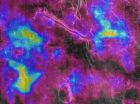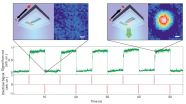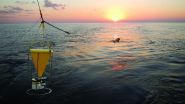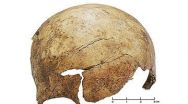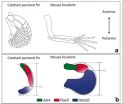(Press-News.org) This news release is available in German.
Microbes are the oldest and most successful organisms on the planet, and they communicate and interact using chemistry as their language. While research of the past decades has uncovered fascinating insights into the chemical interactions of microorganisms in the laboratory, it remains extremely challenging to understand what happens in the natural environment. One of the key issues is the difficulty to tie the production of particular molecules to individual bacterial cells or at least populations of cells in complex environmental samples. Scientists at the Max Planck Institute for Chemical Ecology in collaboration with Thermo Fisher Scientific now made an important step into this direction by simultaneously visualizing the distribution of antibiotics and their producers in natural samples (The ISME Journal, July 2015).
Since the discovery of penicillin by Alexander Fleming in 1928, antibiotics have revolutionized human medicine by providing successful treatment against numerous infectious diseases. The medical application of antibiotics has led to the notion that these compounds are produced by microbes in nature as weapons to combat competing organisms. However, recent discoveries of low concentrations of antibiotics affecting gene expression without detrimental consequences for the target organisms have challenged this view, providing evidence for signaling functions of these substances. In general, surprisingly little is known about the ecology of antibiotics and how they function in the natural context, despite important implications for human medicine. One of the main problems is to detect and quantify antibiotics in complex environmental samples and monitor their production and effect in situ.
In order to achieve this, the scientists focused on a comparatively simple system that involves only a limited number of interacting organisms: The defensive alliance between European beewolf wasps, Philanthus triangulum, and bacteria of the genus Streptomyces ((see previous press releases "Beewolves Protect their Offspring With Antibiotics", February 2010, and "Faithful allies since the Cretaceous", April 2014). In this association, the symbionts are cultivated in specialized antennal reservoirs of female beewolves and later transferred to the cocoon of the developing offspring, providing protection against mold fungi during the long period of hibernation. The knowledge about the presence of the symbionts as well as the antibiotics they produce on the beewolf cocoon provided an excellent basis for the scientists to devise a method for simultaneously localizing bacterial cells and the production of secondary metabolites in an environmental sample.
The measurement of antibiotics on the beewolf cocoon was achieved by mass-spectrometric (MS) imaging, a technique that uses a tightly focused laser beam to desorp and ionize compounds from the surface of a sample and analyze the resulting molecule ions in a mass spectrometer. "Even though the lateral resolution of MS imaging is still limited, it has enormous potential for the detection and visualization of chemical compounds in nature, due to its broad applicability to a wide range of substances", says Aleš Svatoš, head of the Mass Spectrometry Research Group. On the beewolf cocoon, MS imaging revealed the patchy but widespread distribution of the antibiotics piericidin A1 and B1 across the outer surface. Subsequently, the cocoons were subjected to fluorescence in situ hybridization (FISH): By binding fluorescently labeled probes to the RNA of the bacteria, individual symbiont cells could be visualized under the fluorescence microscope. Applying paint markings around the samples that were visible in both MS imaging and FISH then enabled the scientists to combine the resulting images of both techniques. This allowed for the simultaneous localization of individual symbiont cells and the abundance of antibiotics around them. "Both methods were known before, but nobody had combined them yet. The strength of this approach lies in the potential for FISH to localize and identify individual cells in complex samples, and at the same time monitor ecologically relevant compounds by MS imaging", Martin Kaltenpoth comments, who headed the Max Planck Research Group Insect Symbiosis and is now a professor at the University of Mainz.
The world is full of microbes, and they affect all life on the planet. Understanding how they interact with each other and with multicellular organisms therefore presents a fundamental question in biology. Detecting and visualizing compounds in nature and identifying their microbial producers constitutes a first step to ultimately be able to monitor complex interactions directly where they occur and understand the original function of antibiotics and many other microbe-produced chemicals.
INFORMATION:
Original publication:
Kaltenpoth, M., Strupat, K., Svatoš, A. (2015). Linking metabolite production to taxonomic identity in environmental samples by (MA)LDI-FISH. The ISME Journal, doi: 10.1038/ismej.2015.122. http://dx.doi.org/10.1038/ismej.2015.122
Further Information:
Prof. Dr. Martin Kaltenpoth, Johannes Gutenberg University of Mainz, Johann-Joachim-Becher-Weg 13, 55128 Mainz, Tel. +49 6131 3924411, E-Mail mkaltenp@uni-mainz.de
Dr. Aleš Svatoš, Max Planck Institute for Chemical Ecology, Hans-Knöll-Straße 8, 07745 Jena, Germany, Tel. +49 3641 57-1700, E-Mail svatos@ice.mpg.de
Contact and Picture Requests:
Angela Overmeyer M.A., Max Planck Institute for Chemical Ecology, Hans-Knöll-Str. 8, 07743 Jena, Germany, +49 3641 57-2110, E-Mail overmeyer@ice.mpg.de
Download of high resolution images: http://www.ice.mpg.de/ext/downloads2015.html
For the first time ever, researchers have succeeded in creating arrangements of colloids - tiny particles suspended in a solution - and, importantly, they have managed to control their motion with high precision and speed. Thanks to this new technique developed by scientists at the University of Zurich, colloidal nanoparticles may play a role in digital technologies of the future. Nanoparticles can be rapidly displaced, require little energy and their small footprint offers large storage capacity - all these attributes make them well suited to new data storage applications ...
In a commentary published in the Aug. 13 issue of JAMA, Johns Hopkins experts say consolidation of hospitals into massive chains threatens healthy competition, reduces patient choice and could drive up medical expenses.
The authors call on the Federal Trade Commission -- the regulatory body overseeing business practices and consumer protection -- to be more vigilant and cautious when hospital systems seek approval to consolidate and to pay particular attention to geographic regions where proposed mergers could create a single dominant hospital system.
"It's really Economics ...
AMES, Iowa - Mothers are often the caregiver when a child is sick, and that motherly instinct doesn't go away when the child is an adult. In fact, mothers provide more support to adult children with a serious health condition than to their other children, according to new research that will be presented at the American Sociological Association 2015 Annual Meeting.
It's a situation that can put older mothers in a vulnerable position, said Megan Gilligan, lead author and assistant professor of human development and family studies at Iowa State University. Gilligan and ...
Researchers from North Carolina State University, Institut Langevin and Paris-Descartes University have conducted a proof-of-concept study that raises the possibility of using ultrasound techniques to detect cervical stiffness changes that indicate an increased risk of preterm labor in pregnant women. While additional work needs to be done, it may ultimately give doctors a new tool for determining when to provide treatment that can prevent preterm birth.
Premature births can mean low birthweights and other medical problems for newborns, but there are steps that doctors ...
An international research team reports results of a three-year study of sediment samples collected offshore from the Fukushima Daiichi Nuclear Power Plant in a new paper published August 18, 2015, in the American Chemical Society's journal, Environmental Science and Technology.
The research aids in understanding what happens to Fukushima contaminants after they are buried on the seafloor off coastal Japan.
Led by Ken Buesseler, a senior scientist and marine chemist at the Woods Hole Oceanographic Institution (WHOI), the team found that a small fraction of contaminated ...
Only 1 in 10 heart failure patients is referred to a cardiac rehabilitation program after being hospitalized, despite strong evidence that such exercise programs improve quality of life and reduce the likelihood of future hospitalizations.
The findings, from a UCLA-led study, appear in the August 25 Journal of the American College of Cardiology. Researchers drew the data from a national database of more than 100,000 people with heart failure who were discharged from hospitals between 2005 and 2014 and were eligible for cardiac rehabilitation programs.
"Although we expected ...
A new class of fascinating technologies -- including optics in computing, telecommunications links and switches, and virtually any other optical component -- could be created simply by configuring a mesh of light-controlling devices known as interferometers. This is similar to the way electronic semiconductors can fashion the wide array of digital technologies we have at our disposal today.
Optical technologies have the potential to greatly reduce the power consumption of computers, speed telecommunications, and enhance the sensitivity of chemical and biological sensors. ...
A national survey of more than 750 emergency medical services providers conducted by researchers at Oregon Health & Science University identified airway management skills, personal anxiety and limited pediatric care proficiency among key factors that may contribute to pediatric safety events for children in out-of-hospital emergent care situations. The study, published online today in The Journal of Pediatrics, supports the American Academy of Pediatrics' recommendation for pediatric physician involvement in EMS training, medical oversight and policy development.
"Pediatric ...
Violent conflicts in Neolithic Europe were held more brutally than has been known so far. This emerges from a recent anthropological analysis of the roughly 7000-year-old mass grave of Schöneck-Kilianstädten by researcher of the Universities of Basel and Mainz. The findings, published in the journal PNAS, show that victims were murdered and deliberately mutilated.
It was during the time when Europeans first began to farm. To what degree conflicts and wars featured in the early Neolithic (5600 to 4900 B.C.), and especially in the so-called Linear Pottery culture ...
A study of catsharks reveals how alterations in the expression and function of certain genes in limb buds underlie the evolution of fish fins to limbs. The findings are reported by researchers from Tokyo Institute of Technology (Tokyo Tech), the Centre for Genomic Regulation (CRG, Barcelona) and their collaborators in the journal eLife and give new insight into how fish evolved to live on land in the form of early tetrapods.
The first four-legged, land-living creatures - known as early tetrapods - evolved from fish, following the transformation of fins into limbs. This ...
